The Ultimate Guide to Feeding Large Breed Dogs
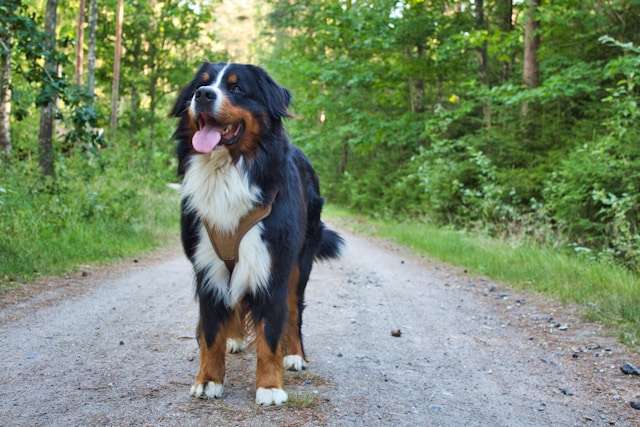
Owning a large breed dog comes with unique responsibilities, especially regarding feeding. These gentle giants grow differently than smaller breeds and have specific nutritional needs to support their size, energy, and health.
Without the proper diet, they risk joint issues, weight problems, and even shortened lifespans. This guide includes everything you need to know about choosing the best food, understanding portion control, and avoiding common feeding mistakes. Your dog’s health and happiness start with what’s in their bowl.
Table of Contents
Understanding the Nutritional Needs of Large Breed Dogs
Large breed dogs require tailored diets to meet their unique growth and health needs. Their size, slower metabolic rates, and vulnerability to joint issues call for purposeful nutrition. Let’s uncover the key elements that shape their dietary needs.
Key Factors Affecting Nutrition
Large breeds don’t just need more food because of their size; they need more competent nutrition. Focus on these factors when designing their diet:
Bone and Joint Support: Large dogs are prone to joint issues like hip dysplasia. Foods fortified with glucosamine and chondroitin can help maintain healthy joints. Omega-3 fatty acids also support mobility and reduce inflammation. Learn more about joint-friendly diets for large dogs.
Weight Management: Obesity is a common problem for large breeds. Excess weight puts extra pressure on their joints, increasing the risk of arthritis. Feed them high-quality, nutrient-dense food with controlled calories to prevent overfeeding.
Puppy Growth: Large breed puppies need slow, steady growth to avoid skeletal issues. Too much calcium or calorie intake during their early stages can lead to rapid growth, straining their bones and joints.
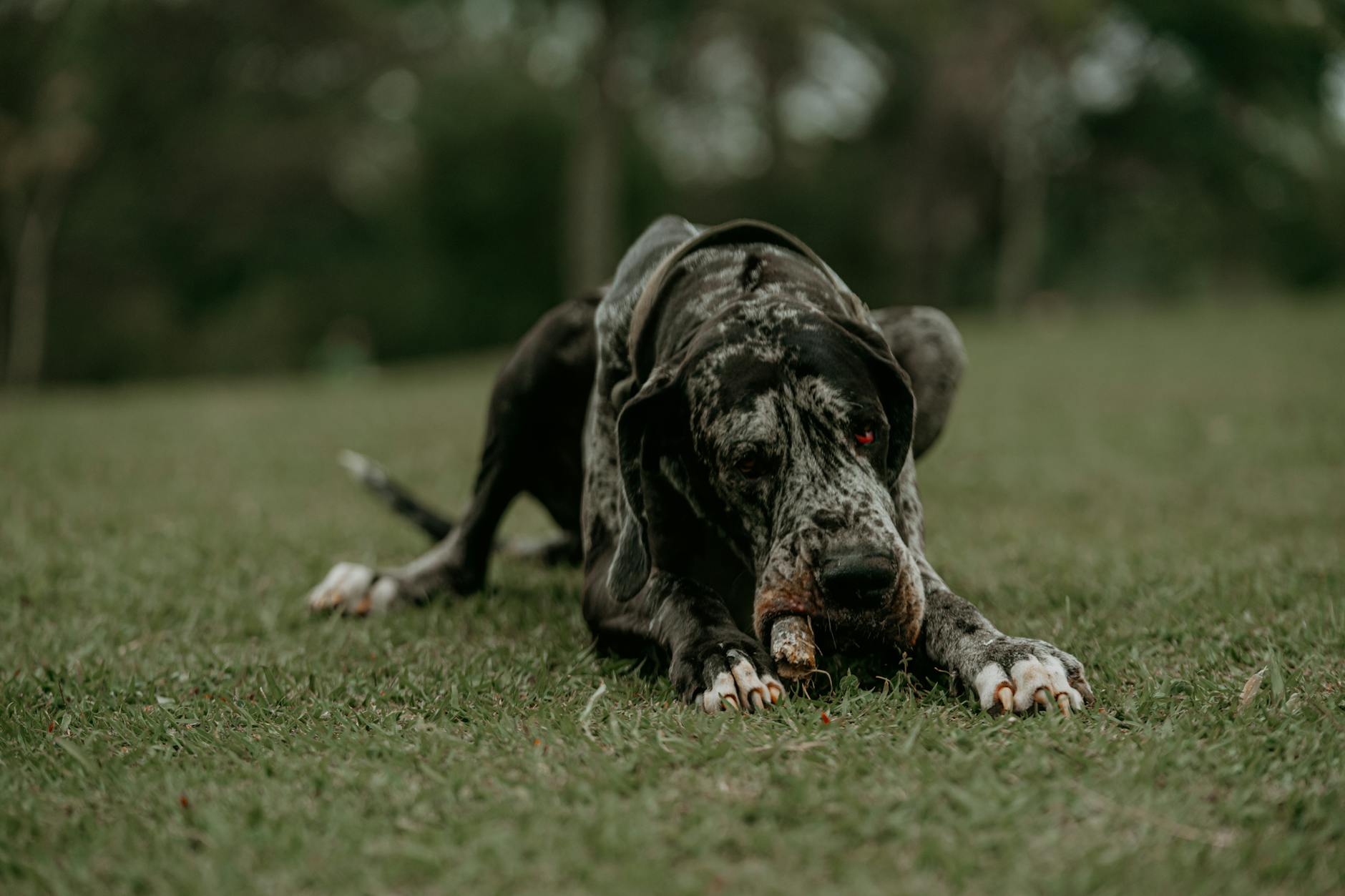
Photo by Làura Ronchinni
Essential Nutrients for Large Breeds
Large breed dogs require a well-balanced diet of essential nutrients to meet their specific demands. Here’s what should be in their bowl:
Protein: Protein fuels muscle development and repairs tissue. Opt for lean proteins like chicken, fish, and lamb. Larger muscles mean higher protein demands. Check this in-depth look at why protein matters.
Fats: Healthy fats, especially omega-3 and omega-6 fatty acids, are essential for energy and a shiny coat. These also support joint health and brain function.Calcium and Phosphorus: These minerals aid bone strength, but balancing them is essential. Too much calcium can harm a puppy’s developing skeleton. Always look for diets designed for large breeds.
- Vitamins like A and D promote bone health, while antioxidants like vitamins.
E and C support a strong immune system.
- Antioxidants
are crucial for combatting oxidative stress, which can contribute to joint inflammation. Antioxidants are often found in whole foods like blueberries and carrots.
Large breed dogs aren’t just big—they’re complex. Feeding them properly requires attention to their growth patterns, weight, and specific health concerns. A thoughtful and nutritionally balanced approach will prepare your dog for a healthier future.
Best Types of Food for Large Breed Dogs
Feeding a large breed dog isn’t just about filling a bigger bowl. Their diets must meet their unique physiological demands, from supporting joint health to managing weight. Understanding the different food types and their benefits can make all the difference in keeping your furry friend happy and healthy.
Dry Kibble vs. Canned Food: Discuss the pros and cons of each type.
When selecting food for your large breed dog, you’ll primarily encounter two options: dry kibble and canned (wet) food. Each has pros and cons depending on your dog’s needs and lifestyle.
Dry Kibble: Known for its convenience and cost-efficiency, kibble is the go-to choice for many dog owners. Its crunchy texture helps reduce plaque, lowering
the risk of dental issues, especially for large breeds prone to tartar buildup. Plus, kibble is more straightforwardto store and has a longer shelf life. However, some kibbles may skimp on moisture, potentially leading to dehydration in dogs that don’t drink enough water.
Learn more about how to choose between dry and wet food options.- Canned Food: Wet food provides a high moisture content, a bonus for hydration and digestion. For picky eaters, its pungent aroma often makes it more appealing. Nutritionally, canned food can be high in protein and fats, making it a good supplement to an active dog’s diet. However, it’s pricier, and the soft texture doesn’t provide the same dental benefits as kibble. Find out what experts say about wet dog food and its benefits.
Combining both options can bring advantages while mitigating downsides. Consider trying a mix if it suits your dog’s preferences and needs.
Grain-Free Versus Grain-Inclusive Diets: Evaluate the nutritional aspects and potential benefits or drawbacks.
Grain-free diets have gained popularity in recent years, but are they necessary for large breeds? Here’s a breakdown of the differences:
Grain-Free Diets: These diets eliminate grains like corn, wheat, and barley, often replacing them with legumes like lentils or chickpeas. Advocates argue they reduce food sensitivities and are higher in protein. However, be cautious: the FDA has linked some grain-free diets to heart disease in dogs, particularly due to their high legume content. Read more about the risks associated with grain-free diets.
Grain-Inclusive Diets: These include wholesome grains such as brown rice, oatmeal, and barley. For most dogs, grains are an excellent source of digestible energy. They also provide vitamins, minerals, and fiber. Unless your large breed has a diagnosed grain allergy, there’s no need to avoid grains. See why grain-inclusive diets remain a trusted choice.
In most cases, the decision should be based on a consultation with your vet and close monitoring of your dog’s health and activity levels.
Homemade Dog Food: What to Consider
Making dog food at home gives you complete control over ingredients and quality. While it might seem like a great idea, there are several factors to keep in mind to ensure your dog gets balanced and complete nutrition.
- Balanced Nutrients: Large breeds need lean protein sources like turkey, chicken, or fish, along with nutrient-dense carbohydrates like sweet potatoes or brown rice. Don’t overlook calcium and phosphorus for bone health; an imbalance can lead to skeletal issues.
- Avoiding Toxic Foods: Always steer clear of onions, garlic, chocolate, grapes, and other foods that are harmful to dogs.
- Portion Control: Overfeeding homemade food can lead to obesity, even if the ingredients are healthy.
Homemade diets require careful planning. Work with a vet or canine nutritionist to create a recipe tailored to your dog. Check out this easy recipe to get started.
Importance of Life-Stage-Specific Nutrition
Large breed dogs face different nutritional challenges as they age. Feeding them according to their life stage is crucial for long-term health:
- Puppies: They need diets with controlled calcium and phosphorus levels to ensure steady skeletal development. Overnutrition at this stage can lead to joint issues later in life. Learn more about feeding large breed puppies here.
- Adults: The goal is maintaining muscle mass while preventing excessive weight gain. High-quality protein along with joint-supporting nutrients like glucosamine is essential.
- Seniors: Older dogs benefit from lower-calorie food to manage reduced activity levels. Use senior formulas with antioxidants and omega-3 fatty acids to support aging joints and cognitive function. Explore more on life-stage-specific diets for large breeds.
Tailoring food to their age ensures that all stages of your dog’s life are healthy and happy.

Photo by Gundula Vogel
Common Feeding Challenges for Large Breeds
Feeding large breed dogs may seem straightforward, but their unique physiology and nutritional needs often present challenges that can impact their health. Pay attention to these key areas to ensure your dog thrives.
Overeating and Obesity Risks: Detail the risks associated with rapid weight gain
Large breeds are naturally at higher risk of obesity due to their slower metabolisms and propensity to overeat. Overweight dogs face numerous health problems, including:
- Joint Damage: Extra weight strains joints and accelerates diseases like arthritis.
- Heart and Respiratory Issues: Excess fat makes the heart work harder, increasing the risk of cardiovascular problems.
- Shortened Lifespan: Studies show overweight dogs live shorter lives, sometimes by several years.
Preventing obesity begins with portion control. Use measuring cups for every meal and avoid free-feeding methods. Tracking treats and supplementing with healthier, low-calorie options like carrots can also help. Additionally, ensure daily exercise is part of their routine. For more insights, check out this guide on obesity risks in dogs.

Photo by Mia X
Managing Bloat: Causes and Prevention
Bloat, or gastric dilatation-volvulus (GDV), is a life-threatening condition common in large breeds. It occurs when the stomach fills with gas and twists, cutting off blood flow. The symptoms include:
- Distended abdomen
- Restlessness or pacing
- Drooling and retching without vomiting
What causes bloat? Rapid eating, consuming large meals, drinking water too quickly, or exercising immediately after eating can all contribute. Preventive measures include:
- Feeding smaller, more frequent meals.
- Using slow feeders to encourage deliberate eating.
- Avoiding exercise for at least an hour after meals.
Some owners consider elevated feeders to reduce strain on their dog’s neck, though research shows this might not always prevent bloat and can even increase its likelihood in certain breeds. For more on how to reduce GDV risk, visit this comprehensive article on bloat prevention.
Food Allergies and Sensitivities in Large Breeds
Food allergies in large dogs can manifest in ways that look like other issues, often making diagnosis tricky. The most common allergens for dogs include beef, chicken, soy, egg, and wheat gluten.
Signs of food allergies:
- Chronic itching, especially on paws and abdomen
- Ear infections or head shaking
- Digestive problems like vomiting or diarrhea
If you suspect a food allergy, start with an elimination diet under the guidance of your vet. Look for limited-ingredient foods that rely on uncommon protein sources like duck or lamb. Treating food sensitivities is an ongoing process, but it can significantly improve your dog’s quality of life. Learn more about identifying food allergies in dogs at this guide from the AKC.
How to Select the Best Dog Food for Large Breeds
Choosing the right food for your large breed dog goes beyond simply picking the most expensive brand or trusting clever marketing. The right nutrition can prevent common health issues such as joint problems, obesity, and digestive sensitivities. Here’s how you can make informed choices to keep your gentle giant happy and healthy.
Reading and Understanding Ingredient Labels

Photo by Impact Dog Crates
Understanding a dog food label is like reading a recipe for health. Look for key elements such as:
- Protein Sources: The first ingredient should be a recognizable protein like chicken or beef.
- Additive-Free: Avoid vague terms like “meat meal” or “animal by-products.”
- Grain Inclusion: Don’t be afraid of healthy grains like oats or rice unless your dog has allergies.
Inspect the guaranteed analysis for protein, fat, and fiber percentages. The ingredient list is organized by weight, so heavier ingredients like water appear first. For more tips, check out this guide to reading dog food labels.
Recognizing High-Quality Protein Sources
Protein powers your dog’s muscles, energy, and overall health. Look for foods with lean, digestible proteins. Some top options include:
- Chicken and Turkey: Easy to digest and great for dogs with allergies.
- Fish (Salmon, Whitefish): Packed with omega-3 fatty acids for joint and coat health.
- Lamb: A mild protein often used for dogs with poultry sensitivities.
- Duck and Venison: Novel proteins ideal for dogs with dietary restrictions.
Proteins should always be listed as the main ingredient, not buried under fillers. Learn what makes proteins so essential with this detailed resource.
Avoiding Harmful Additives and Fillers
Not all dog food is created equally. Some brands use additives and fillers that provide no nutritional value and could harm your dog. Common culprits to avoid include:
- Chemical Preservatives: Look out for BHA, BHT, and ethoxyquin.
- Artificial Colors and Flavors: These serve no purpose other than marketing appeal.
- Unhealthy Fats: Trans fats or hydrogenated oils can lead to obesity and heart issues.
The cleaner the ingredient list, the better. For more harmful ingredient details, head to this guide on unsafe ingredients in dog food.
Importance of Feeding Trials and AAFCO Standards
Feeding trials and standards ensure the food meets the nutritional needs of dogs. Look for:
- AAFCO Statement: This verifies the food is nutritionally balanced based on established guidelines.
- Animal Feeding Trials: Indicates dogs have tested the food over time with positive results for growth and health.
Don’t settle for subpar products. AAFCO standards are like the FDA for dog food. Read more on how these standards impact quality in this insightful article.
Armed with the right knowledge, you can choose food that fuels your large breed dog’s playful, healthy lifestyle. Consider these tips each time you shop, prioritizing your pup’s unique needs over flashy labels.
Special Considerations for Puppies and Seniors
Large breed dogs have unique dietary needs as they grow and age. Paying attention to these needs is essential for their health and vitality. Puppies and senior dogs, in particular, require special care when it comes to feeding. Let’s explore their specific nutritional needs.
Feeding Large Breed Puppies
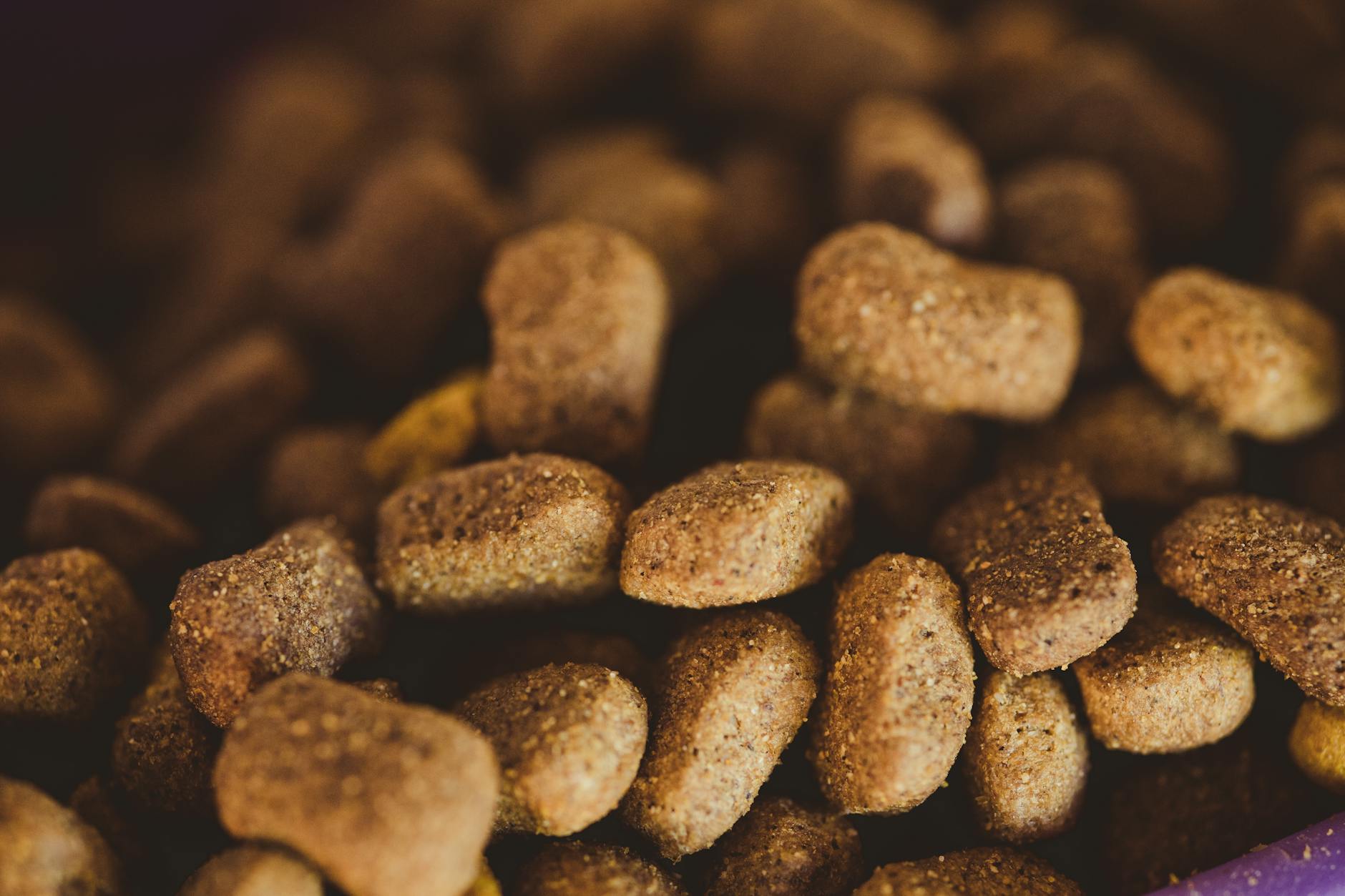
Photo by Rafael Rodrigues
Large breed puppies grow rapidly, and their diets play a vital role in ensuring healthy development. Unlike smaller breeds, they need controlled nutrition to avoid joint and skeletal issues.
- Calorie Control: Puppies should not consume high-calorie diets that encourage rapid growth. A slower, steadier growth rate reduces strain on developing bones.
- Balanced Calcium and Phosphorus: The ideal calcium-to-phosphorus ratio falls between 1.2:1 and 1.4:1. Excess calcium can lead to improper bone growth and skeletal abnormalities.
- Protein and Fat: Protein is crucial for muscle development, but it should complement a moderate fat intake to avoid excess weight gain.
When choosing food, look for formulas specifically labeled for large breed puppies. These are designed to meet their unique needs without overloading their growing bodies. For more detailed guidelines, see this resource.
Feeding Senior Large Breed Dogs
As large breed dogs age, their physiology changes significantly. They become less active, their metabolism slows, and they may develop joint issues. These factors require a tailored nutritional approach to keep them healthy.
- Lower Calories: Senior dogs are less active, making calorie control crucial to avoid weight gain. Overweight seniors face compounded joint issues and metabolic stress.
- Joint Support: Consider foods with added glucosamine and omega-3 fatty acids to support mobility and reduce inflammation.
- Increased Fiber: Fiber helps with digestion, which can slow down with age, improving gut health.
- Easily Digestible Proteins: High-quality, lean proteins are easier to digest and help maintain muscle mass as metabolism decreases.
A senior-specific diet can go a long way in preventing age-related issues and keeping your dog comfortable. Explore more tips on managing senior dog nutrition here.
FAQs About Feeding Large Breed Dogs
Feeding large breed dogs properly can feel like an overwhelming task, but understanding their unique needs simplifies the process. This section answers some of the most common questions owners ask about feeding their large breed companions.
Best Feeding Schedule for Large Breed Dogs
Large breed dogs thrive on a consistent feeding schedule. Skipping meals or irregular feeding can cause digestive upset or lead to overeating. Most vets recommend feeding them twice a day—once in the morning and again in the evening. This approach helps maintain consistent energy levels and prevents risks like bloat (gastric dilatation-volvulus).
For puppies, splitting their meals into 3-4 smaller portions a day can aid in healthy growth without overwhelming their stomachs. Establish a routine, and stick to it. Curious about the timing? This guide offers practical feeding tips.
Can Large Breed Dogs Eat the Same Food as Smaller Breeds?
Technically, yes, but it’s not ideal. Small breed food lacks the specialized nutrients that large breeds depend on. Additionally, the kibble size for small dogs may not provide the dental benefits or slow chewing needed for large breeds. Conversely, feeding small breeds food designed for large dogs can lead to excess calorie intake. Matching the food type to your dog’s size is always the smarter move. Here’s an in-depth explanation: Differences Between Large and Small Breed Dog Foods.
How Much Should I Feed My Large Breed Puppy Per Day?
Feeding large breed puppies requires precision. Overfeeding can lead to rapid growth, which stresses developing bones and joints. On average, puppies need 3-4 meals a day, with portion sizes adjusted based on their age, weight, and energy levels. Most foods tailored for large breed puppies provide feeding guidelines on the label. Start with these and adjust based on your dog’s body condition and activity.
A useful resource for portion measurements is available here: Puppy Feeding Chart & Guide.
Are Supplements Necessary for Large Breed Dogs?
Generally, if your dog is eating a complete and balanced diet, supplements aren’t necessary unless directed by your vet. However, certain supplements, such as glucosamine, chondroitin, and omega-3 fatty acids, can be helpful for joint support, especially in aging dogs or those prone to arthritis. Always check with your veterinarian before starting supplements to avoid overdoing any nutrients. Here’s more insight into joint-supportive supplements: Dog Supplements to Improve Overall Health.
How Can I Tell if My Dog is Overweight?
Assessing your dog’s weight involves checking for a visible waistline and feeling for their ribs. When you touch their sides, you should be able to feel ribs without pressing too hard. A sagging stomach or lack of an upward waist curve may indicate excess weight. Obesity in dogs leads to joint problems, heart issues, and reduced lifespan. If you’re unsure, consult your vet or try this guide for visual aids: How to Tell If Your Dog Is in Shape.
What Ingredients Should I Avoid in Large Breed Dog Food?
Some ingredients offer zero nutritional value or can harm your dog in the long term. Avoid these common red flags when selecting food:
- Artificial preservatives like BHA and BHT
- Fillers such as corn gluten meal and soybean hulls
- Rendered animal fats or by-products
- Artificial colors and flavors
For more details on unsafe ingredients, check this comprehensive guide: 9 Unsafe Ingredients to Avoid in Dog Food.
Can a Grain-Free Diet Benefit Large Breed Dogs?
Grain-free diets are popular, but they’re not always better for every dog. In some cases, dogs with grain allergies or sensitivities may benefit. However, the FDA has raised concerns about grain-free formulas potentially being linked to heart disease (dilated cardiomyopathy). If you’re considering a grain-free option, consult your vet and keep an eye on your dog’s health. Here’s a balanced overview: Should I Feed My Dog Grain-Free Diet?.

Photo by Matthias Zomer
By addressing these FAQs, you’ll be closer to providing optimal care for your large breed dog’s dietary needs. Always prioritize their unique requirements and consult your vet for guidance.
FAQs About Feeding Large Breed Dogs
Feeding large breed dogs properly can feel complicated, but understanding their unique needs simplifies the process. Here are answers to some of the most common questions.
Best Feeding Schedule for Large Breed Dogs
Large breed dogs thrive when fed on a consistent schedule. Skipping meals or irregular feeding can lead to digestive upset or overeating. Most veterinarians recommend feeding them twice a day—once in the morning and again in the evening. This routine helps maintain stable energy levels and prevents risks like bloat, which is more common in larger breeds. Puppies may benefit from 3-4 smaller meals daily to support controlled growth. Need more advice? Check out these feeding guidelines.
Can Large Breed Dogs Eat the Same Food as Smaller Breeds?
Technically, yes, but it’s not ideal. Foods for smaller breeds are formulated differently and may lack the critical nutrients required for proper joint and bone health in large dogs. Additionally, smaller kibble sizes may not encourage large breed dogs to chew sufficiently, which can impact oral health. Want to know the exact differences? This guide explains the distinctions.
How Much Should I Feed My Large Breed Puppy Per Day?
Getting the portion size right for puppies is crucial. Overfeeding can lead to rapid, unhealthy growth that strains their developing bones and joints. Typically, large breed puppies should eat 3-4 meals daily with portion adjustments based on age, weight, and activity level. Consult the feeding guide on the dog food label and work closely with your vet to monitor growth. This puppy feeding resource lays out some helpful tips.
Are Supplements Necessary for Large Breed Dogs?
If your large breed dog is eating a well-balanced diet, supplements aren’t usually needed. However, some owners opt for specific supplements like glucosamine and omega-3 fatty acids to support joint health, especially in aging dogs or breeds prone to arthritis. Always consult your vet before adding supplements to avoid nutrient imbalances. For more tailored advice, read this dog supplement guide.
How Can I Tell if My Dog is Overweight?
Checking your dog’s weight is straightforward. Stand above your dog and look for a visible waistline. You should also be able to feel, but not see, their ribs when touching their sides. If there’s no defined waist or ribs are difficult to feel, your dog may be overweight. Obesity leads to serious health risks, including joint strain and a shorter lifespan. Here’s a helpful guide to assess your dog’s weight.
Grain-Free Diets: Are They Beneficial?
Not necessarily. While grain-free diets may help dogs with diagnosed grain allergies, they’re not inherently better. Grains like rice and oats can provide valuable nutrients and energy. Additionally, the FDA has flagged certain grain-free formulas for their possible link to heart disease in dogs. Curious about whether your dog needs a grain-free diet? This resource explains the pros and cons.

Photo by Doğan Alpaslan Demir
Use this FAQ section as a quick reference to ensure your large breed dog gets the right nutrition and care. From feeding schedules to dietary choices, making informed decisions will keep your dog happy and healthy for years to come.
Conclusion
Feeding large breed dogs requires intentional choices that prioritize their size, needs, and health risks. Proper nutrition supports healthy growth, prevents joint damage, and reduces obesity-linked issues.
Remember, your dog depends on you to provide balanced meals tailored to their life stage and activity level. Always check labels, opt for high-quality ingredients, and avoid fillers or harmful additives.
Consulting a vet is crucial for addressing specific needs, from joint health to potential food sensitivities. Choose wisely, stay consistent, and give your gentle giant the care they deserve.

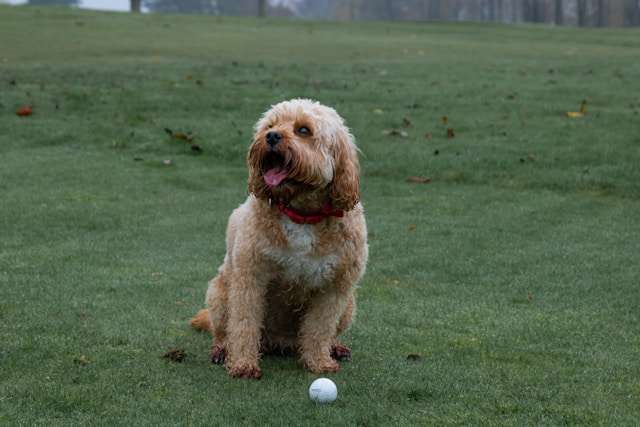
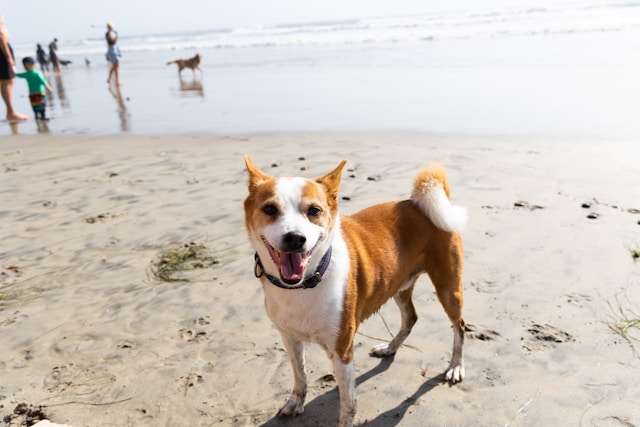
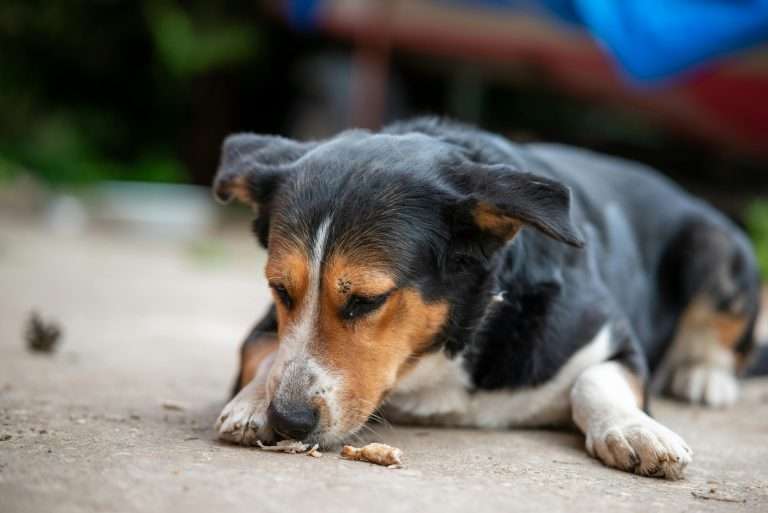



3 Comments